The next-gen MacBook Pro with Retina Display Review
by Anand Lal Shimpi on June 23, 2012 4:14 AM EST- Posted in
- Mac
- Apple
- MacBook Pro
- Laptops
- Notebooks
The King of All Notebook Displays
For years Apple has been shipping some of the best displays in consumer notebooks, but the MacBook Pro’s Retina Display is in a league of its own. While I never liked the phrase “painted on” in reference to the iPad and iPhone Retina Displays, that’s the best way I can describe the effect the MacBook Pro’s Retina Display has on me. Text really does look painted on. The effect is really the result of two things.
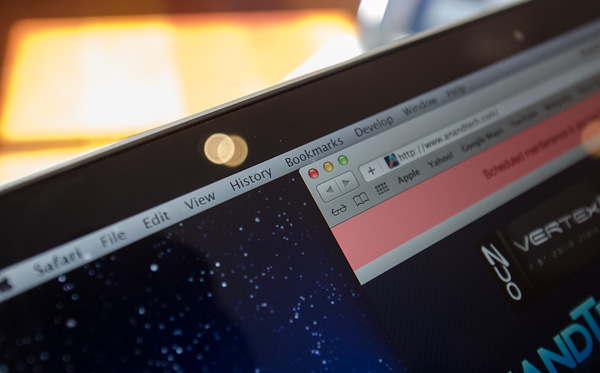
The first is Apple’s removal of its cover glass. LCD panels aren’t particularly attractive, they are ugly squares composed of two pieces of glass and a number of filters/polarizers. To hide the ugly edges, display makers wrap bezels around the display. Most people aren’t fond of bezels so next came a ton of effort to minimize bezel size. An alternative is to simply place a third piece of glass over the entire LCD assembly and make it look as if the bezel and LCD panel are integrated. This outermost layer is known as a cover glass and is what Apple uses on all of its glossy displays. If you’ve ever taken apart a Cinema/Thunderbolt Display or a newer iMac you’ll know that the cover glass is literally just a piece of glass that you have to remove with some suction cups.
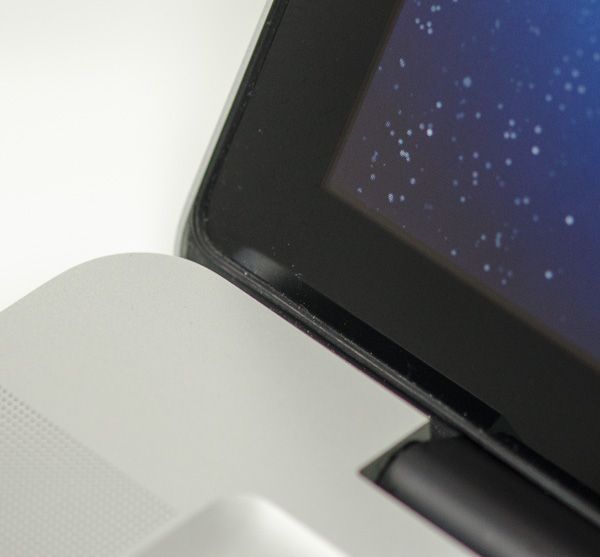
Non-Retina MacBook Pro, notice the gap between the outermost LCD glass and the cover glass
The MacBook Pro’s Retina Display does away with the cover glass and instead uses a fairly unique LCD assembly. There are still two pieces of glass but the outermost glass is actually a different size and shape - it integrates a bezel. By integrating the bezel into the outermost glass in the LCD stack you get the same effect as a cover glass but without the added reflections it introduces.
You also limit the possibility of dust getting trapped between the cover glass and the LCD. The danger is that you no longer have a protective piece of glass in front of your expensive new LCD. If you scratch the display you're scratching the LCD itself. While this has been true for conventional matte displays for a while, it's worth mentioning if you're used to Apple's glossy displays where you did have that added security layer.
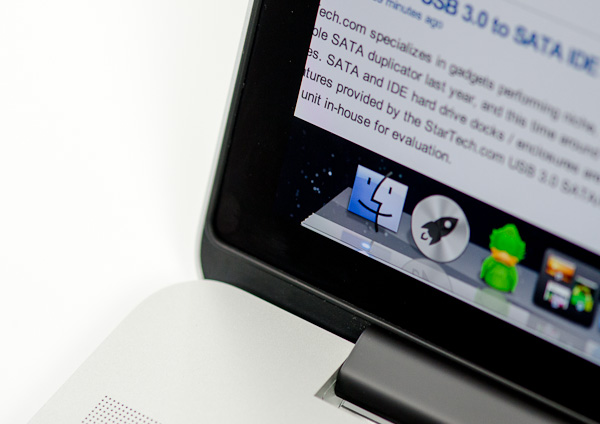
The MacBook Pro with Retina Display, no gap, no cover glass
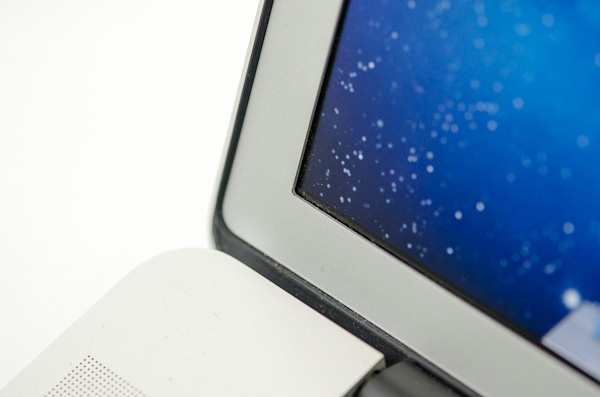
The 2011 MacBook Pro with High-Res Matte display option, no cover glass, top bezel

From left to right: 2010 High Res Glossy MBP, 2012 rMBP, 2011 High Res Matte MBP
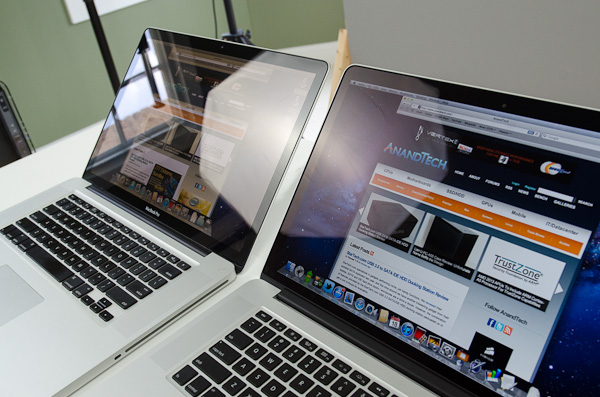
Glare handling indoors - 2011 High Res, Glossy MBP (left) vs 2012 rMBP (right)
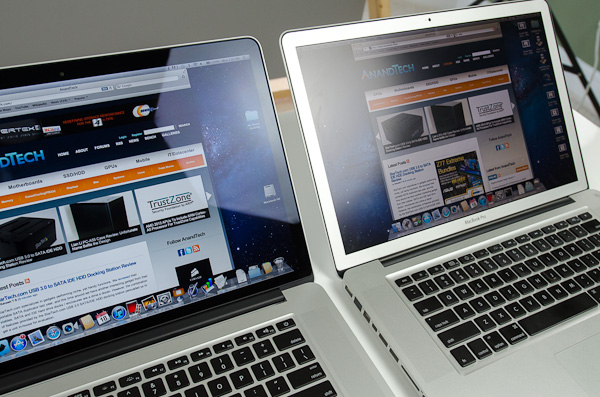
Glare handling indoors - 2012 rMBP (left) vs. 2011 High Res, Matte MBP (right)
The Retina Display is also obviously an extremely high resolution panel at 2880 x 1800. Note that this is 44.6% more pixels than Apple’s 27-inch Thunderbolt Display, and 26.6% more pixels than the 30-inch panels that we’ve loved for so long - all in a 15.4-inch notebook display.
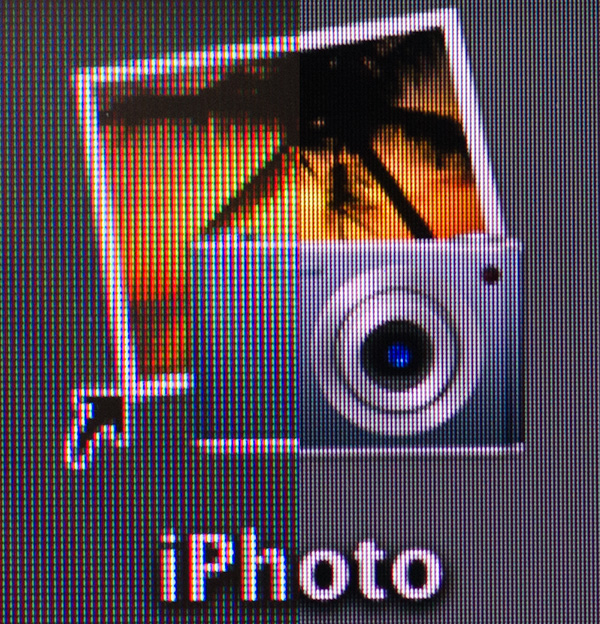
An iPhoto shortcut, High Res 2011 MBP (left) vs. Retina Display MBP (right)
At 220 pixels per inch it’s easily the highest density consumer notebook panel shipping today. At normal viewing distances and even with my face closer than I’m comfortable putting it I simply cannot discern individual pixels.
It’s the combination of these two elements, the removal of the cover glass and the insanely high pixel density that makes everything from text to UI elements just look painted on the new Retina Display. And the effect is gorgeous. I’ve never seen a prettier panel and it’s actually ruined me for pretty much all other displays, notebook and desktop.
While I can appreciate the iPad’s Retina Display, the impact from the MacBook Pro’s display is even more significant. Perhaps it’s because I still spend so much time working on a standard, non-tablet display, but I’m far more excited about this display than anything else Apple has delivered under the Retina moniker.
It’s not just pixel density that Apple has to offer here. Similar to its Retina Displays in the iPhone and iPad, the MacBook Pro’s Retina panel ditches TN in favor of IPS technology. The result is an incredible improvement in viewing angles. On a notebook I don’t spend a lot of time viewing it from far left/right angles, although I see the benefit when I’ve got others huddled around my display. Here the panel performs admirably - you lose brightness at far left/right angles but there’s no perceivable color shift. In fact, the painted on effect is even more impressive at these far left/right viewing angles.
For a single user however the more impressive characteristic is just how good the display looks at vertically off-center angles. I wrote much of the initial parts of this review while on an airplane in coach, which with a 15-inch notebook on my lap means I’m going to be looking at the display at a weird angle to begin with. The thinner rMBP doesn’t do enough to make the airplane usage model any better if the person in front of you decides to recline, but the IPS panel does make the display perfectly usable at the off-center angle you’ll inevitably have to deal with.
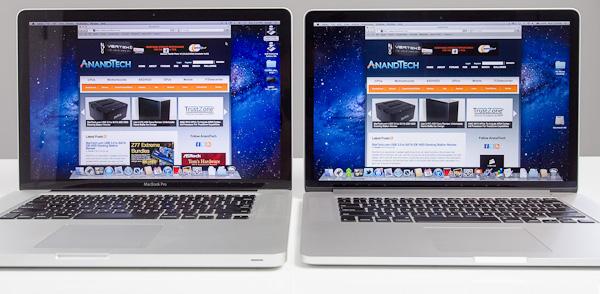
2010 High Res, Glossy MBP (left) vs. 2012 rMBP (right)
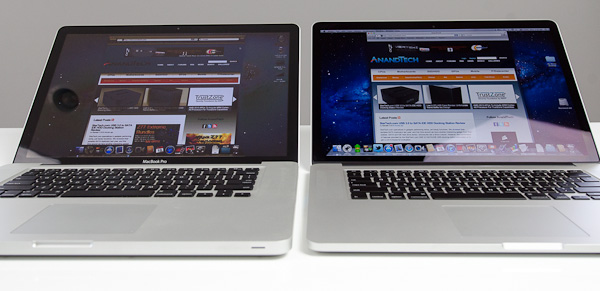
Hello colorshift!
2010 High Res, Glossy MBP (left) vs. 2012 rMBP (right)


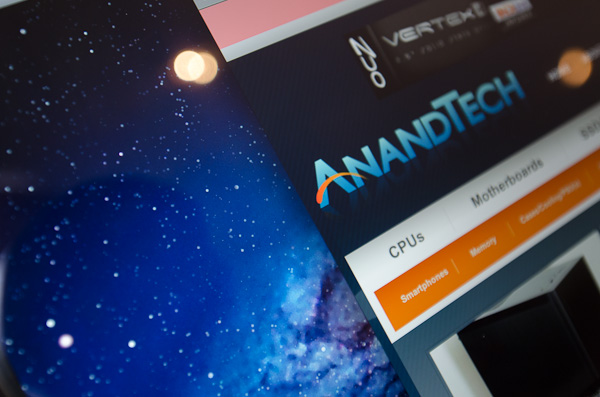
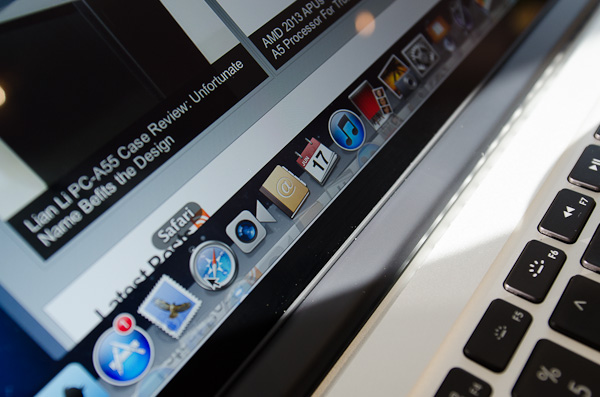
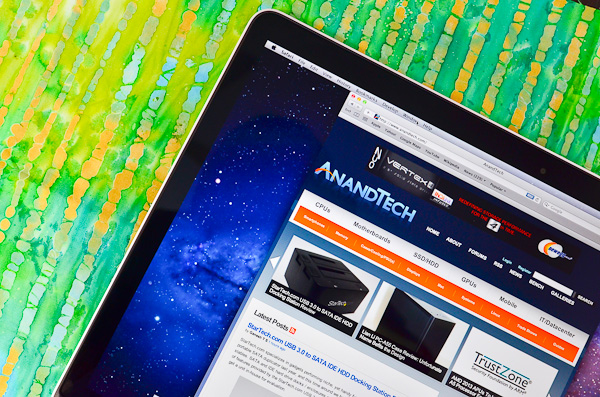
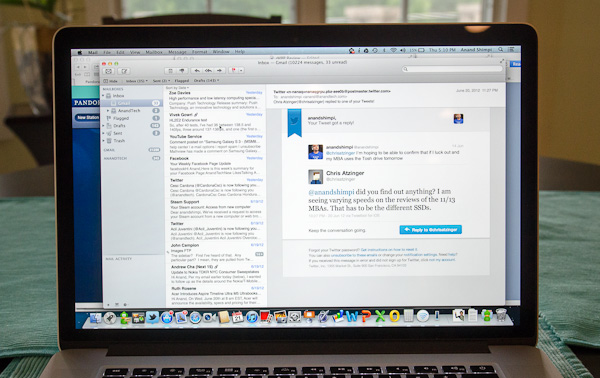
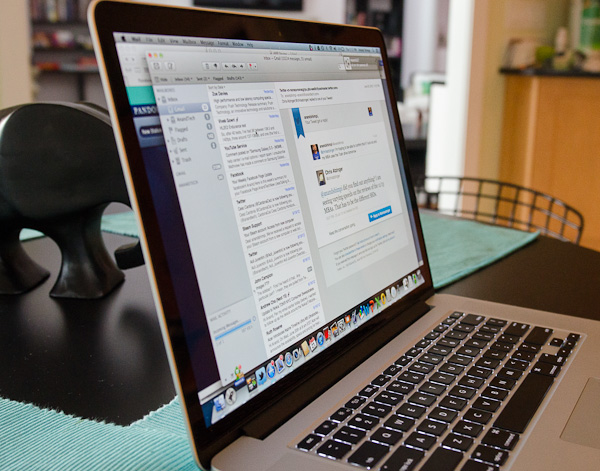








471 Comments
View All Comments
solipsism - Saturday, June 23, 2012 - link
Yes. They've been using them for awhile. At least from last year's MBA's, too.This screenshot is from the new RMBP.
• http://i.imgur.com/ACyGj.png
felixneo - Saturday, June 23, 2012 - link
the question was about the drives themselves, not the chipset.and the previous generation ssd's were too slow to compete with OWC offerings but at a higher price.
felixneo - Sunday, June 24, 2012 - link
so, does anyone have solid evidence that in the non retina macbook pro 15 2012 the optional ssd's are 6g units?MrCromulent - Saturday, June 23, 2012 - link
So how's the performance in multi-monitor setups? We've all seem the OWC blog post with the rMBP driving four displays which at first seems impressive... but if scrolling on *one* screen is sub-30fps already, how much worse does it get with three more displays?Good review as always.. though I miss surface temperatures and objective noise levels.
tipoo - Sunday, June 24, 2012 - link
I'd like to know that also. Doesn't sound good if you can already only scroll a page at 20-30fps, with two, three or even four monitors that would be worse.TEAMSWITCHER - Saturday, June 23, 2012 - link
"To truly take advantage of High DPI it seems as if Microsoft will need everyone to move to Metro."I sure hope this does't happen. I will not give up movable and resizable windows on a large format display for resolution independence. If this this is Microsoft's grand plan, I will abandon the Windows platform for the Mac. My Hackintosh-PC is already spending more and more time booted into OS X rather than Windows 7. For me the transition won't be difficult or costly.
DeciusStrabo - Saturday, June 23, 2012 - link
Just to think not being able to watch a video in one windows, have a live-blog/chat on the next and browsing/working in the main window causes me nightmares to be honest. It's a direction MS now moves with a lot of force I don't want to go to. That's actually the reason why I for the first time in 20 years consider buying a Macbook instead of a Windows laptop.Having a laptop that (which some caveats) is basically resolution-independent is very, very enticing too.
ananduser - Saturday, June 23, 2012 - link
Win7 will be supported until 2020. If you don't like staying on older software then by all means choose the post-PC mac.DeciusStrabo - Sunday, June 24, 2012 - link
As much as I like Win7, I don't want a situation like with XP where new technologies were eithe not supported orr supported via hacks and workarounds (TRIM, USB 3).Despite all the Skeuomorphism and iOS elements Apple's way of integrating the mobile and the desktop world under the leadership of the flexibility and feature-richness and UX of the dsektop approach appeals to me far more than MS' vision of bringing down laptops and desktops to the limited UX-niveau of mobile systems.
One example: The Windows-Filedialog was never the greatest thing, but has become very useable with Vista/Winows 7. Seeing that it might be replaced sooner or later with the DOS-like version implemented in Metro simply makes me sad.
DeciusStrabo - Saturday, June 23, 2012 - link
You are the first to mention beneath all the raving over the display the drawbacks it brings in terms of scrolling and lag. 20 fps doesn't sound that good to be honest. I'm now really reconsidering if I should buy the current MBPR or if I should wait a year until hardware catches up. 2300 € for a laptop that's not perfect? But the tech is rather enticing... Decisions, decisions.